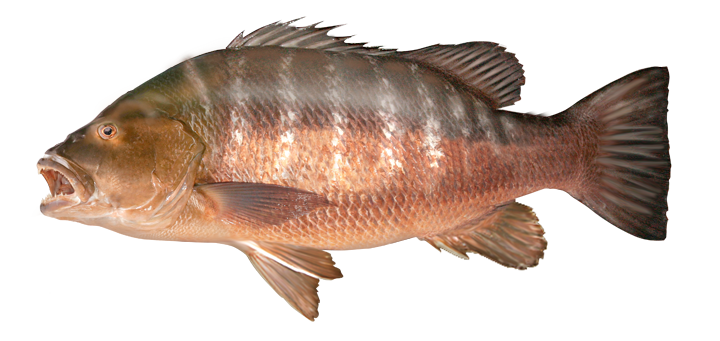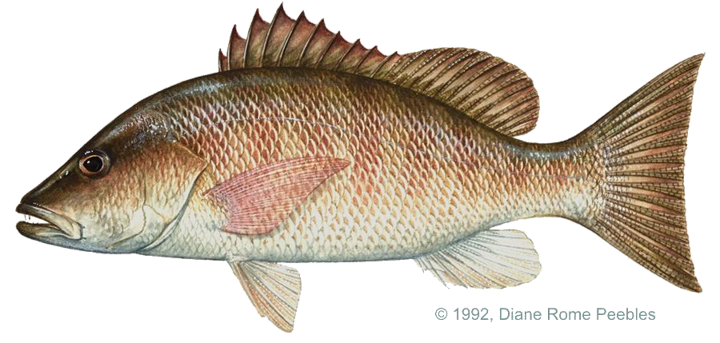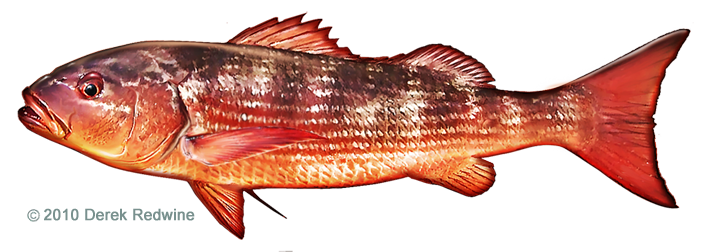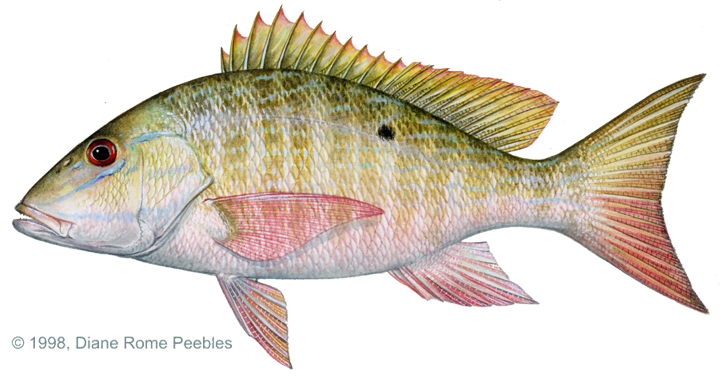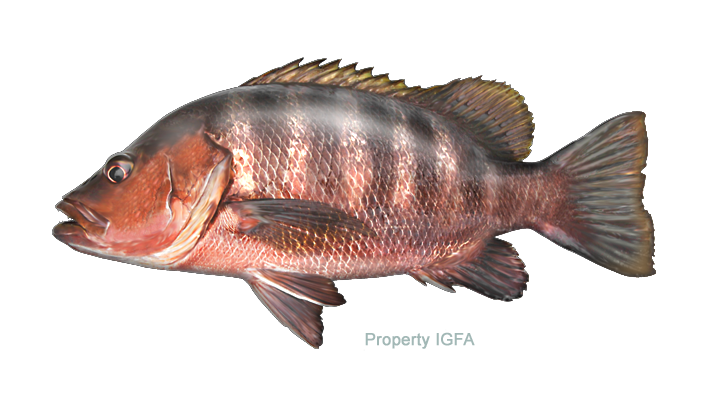Game Fish Identification Reference Guides
Snapper, red
(Lutjanus campechanus)
(Lutjanus campechanus)
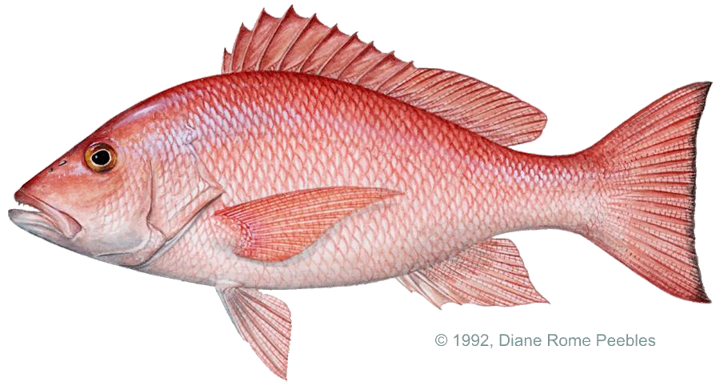
(Poey 1860); LUTJANIDAE FAMILY; also called northern red snapper, pargo colorado, vermelho, pargo del golfo, huachinango del Golfo,
Red Snapper occur in the Gulf of Mexico and in the western Atlantic along the eastern coast of the USA as far north as Massachusetts, but rarely north of the Carolinas. They are absent from the Bahamas and the Caribbean. Juveniles occur in shallow water over sandy or mud bottoms. Adults are more plentiful offshore in 60 to 440 ft of water associated with rough, rocky bottoms and wrecks.
The pinkish to red color and sharply pointed anal fin (rather than rounded) distinguishes the red snapper from most other Gulf of Mexico snappers. The snout is long and triangular and the eyes are a distinctive red. Adults have no dark lateral spot, but juveniles have a dark spot on the upper sides below the anterior soft dorsal fin.
The Red Snapper is sometimes confused with the Southern Red Snapper, L. purpureus, found throughout Caribbean Sea from Cuba southward to northeast Brazil. There are differences, however, in scale and anal fin ray counts. The Red Snapper usually has fewer scales in a row along the midside (usually 47-49 not 50-51 and fewer scales between the beginning of the dorsal fin and the lateral line, (usually 8-9, not 10-11). The Norther Red Snapper has more soft rays in the anal fins (usually 9 instead of 8).
This species feeds primarily on fish, crustaceans, worms and cephalopods. They tend to be nibblers and pickers and soft touch is needed when angling. Red snanpper seem to prefer a still or slowly moving bait. Squid, whole fish and cut bait can be used to entice red snapper to bite. By chummming them up to the surface, flies can also be used.
The Red Snapper is one of the most valuable and heavily exploited snappers in American waters. It is now closely protected; shrimp fishing, accused of destroying young snappers, is currently restricted.
Red Snapper occur in the Gulf of Mexico and in the western Atlantic along the eastern coast of the USA as far north as Massachusetts, but rarely north of the Carolinas. They are absent from the Bahamas and the Caribbean. Juveniles occur in shallow water over sandy or mud bottoms. Adults are more plentiful offshore in 60 to 440 ft of water associated with rough, rocky bottoms and wrecks.
The pinkish to red color and sharply pointed anal fin (rather than rounded) distinguishes the red snapper from most other Gulf of Mexico snappers. The snout is long and triangular and the eyes are a distinctive red. Adults have no dark lateral spot, but juveniles have a dark spot on the upper sides below the anterior soft dorsal fin.
The Red Snapper is sometimes confused with the Southern Red Snapper, L. purpureus, found throughout Caribbean Sea from Cuba southward to northeast Brazil. There are differences, however, in scale and anal fin ray counts. The Red Snapper usually has fewer scales in a row along the midside (usually 47-49 not 50-51 and fewer scales between the beginning of the dorsal fin and the lateral line, (usually 8-9, not 10-11). The Norther Red Snapper has more soft rays in the anal fins (usually 9 instead of 8).
This species feeds primarily on fish, crustaceans, worms and cephalopods. They tend to be nibblers and pickers and soft touch is needed when angling. Red snanpper seem to prefer a still or slowly moving bait. Squid, whole fish and cut bait can be used to entice red snapper to bite. By chummming them up to the surface, flies can also be used.
The Red Snapper is one of the most valuable and heavily exploited snappers in American waters. It is now closely protected; shrimp fishing, accused of destroying young snappers, is currently restricted.













